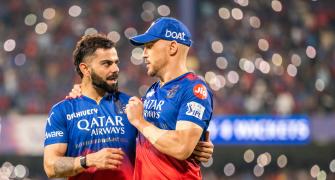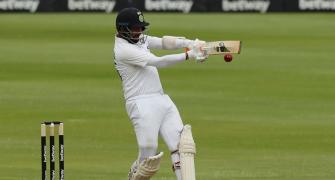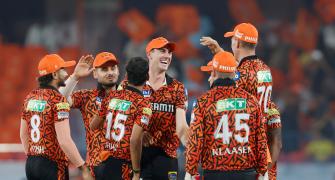If sector funds sound suave, tax-saving funds functional and mid-caps trendy, then diversified equity funds can be dubbed as 'Plain Jane'. Sure, they are not as boring as index funds but neither are they hot.
If that summarises your line of thought, then you better take a good look at what the seemingly plain diversified equity fund is capable of delivering. In fact, you don't have to go back too far in time. Last year holds fond memories for mutual fund investors. Everyone joined the fun and had a good time in 2005.
The top performing diversified equity fund - Magnum Emerging Businesses - returned a phenomenal 80.21 per cent. The lousiest actually delivered 23.32 per cent.
By the way, that title goes to LICMF Equity. As you can see, no one was left out of the party. But it was not just last year that was boom time for investors. Not a single diversified equity fund has lost a single penny in the last three calendar years - 2003 to 2005.
Even the worst fund returned over 37 per cent per annum during this time period. Such was the rally in the stock market that losing money was difficult.
In fact, diversified equity funds have beaten the Sensex returns over the past 10 years, last year being the only exception.
So how would the figures in the table translate into gains for you? With a 10-year time frame, let's say you had a one-time investment of Rs 10,000 in HDFC Equity. By December 31, 2006, your investment would be worth around Rs 2.75 lakh (Rs 275,000).
Of course, the journey over this decade has not been smooth. In 2000, nearly 60 per cent of all the funds underperformed. But, if you had hung on, you would have reaped the gains.
Varied assortment
While we talk about diversified equity funds as a category, it will be inaccurate to assume that they all have the same focus. In fact, nothing could be further from the truth. Take a sample of what's on offer.
Some such as Magnum Midcap, Franklin India Prima, Sundaram BNP Paribas Select Midcap and Birla Mid Cap are focused on mid-caps.
Birla MNC and UTI MNC are examples of those investing in multinationals. DSP Top 100 Equity invests in the 100 largest corporates.
UTI Services Sector Fund focuses on banking, finance, insurance, education, telecom, travel and entertainment sectors.
Prudential ICICI Power invests in telecom, energy, transportation and financial services sectors.
Birla Sun Life Basic Industries invests in companies sensitive to economic and commodity pricing cycles. So the sector focus would be auto and auto ancillaries, banking, cement, construction, metals and steel.
Funds such as DBS Chola Contra, Kotak Contra, Magnum Contra, Tata Contra and UTI Contra employ contrarian investing. They buy into fundamentally sound scrips, which have underperformed in the recent past or have not been discovered.
Birla Sun Life Frontline Equity will target the same sectoral weights as the BSE 200 but will retain the flexibility of selecting stocks within those sectors.
Templeton India Equity Fund will invest in stocks (India and overseas) that have an attractive (current or potential) dividend yield.
And, that was just the investment focus. A look at their portfolios reveals that they differ on their asset allocation, sectoral weightages, market cap allocation and number of stocks that they invest in.
What's in a name?
Within the equity asset class, there are a lot of differentiating factors too. Since diversified is their first name, that is what you can expect from such funds. What you need to see is how diversified they are and whether or not it caters to your investment taste. Has your fund manager invested in too few stocks? Or is he very heavy on one market cap?
Some fund portfolios are dominated by giant and large-caps such as Pru ICICI Growth, Franklin India Bluechip, HSBC Equity, Reliance Equity, ING Vysya Equity, Escorts Growth Fund and DBS Chola Growth. All these have around 80-85 per cent large cap stocks in their portfolio.
Others have a penchant for mid-, small- and tiny-caps. Standard Chartered Premier Equity (85.40 per cent), HDFC Capital Builder (68 per cent), Birla MNC (64.23 per cent) etc to name a few.
It's obvious that the mid-caps will give more weightage to that market cap, yet that figure will also differ among the funds. Besides market cap and cash allocation, the funds will also differ on the number of stocks that each fund manager decides to invest in.
Looking at the crystal ball
Investors by far are not (and should not be) nostalgic. They are more forward looking. Which brings us to the issue at stake: We saw what the funds have delivered, but what can we expect going forward? With the stock market volatile at 14,000-point levels, can funds be relied upon to deliver the goodies?
Not really. Don't expect the same fabulous returns that we mentioned at the start of the article. That was when the bull run was gaining momentum.
Broadly speaking, fund managers say that you can expect annual returns in the vicinity of 15 per cent over the next few years. A far cry from the mind-boggling returns investors have begun to expect but nonetheless, pretty decent when compared with the fixed return alternatives.
As of now, there are 164 diversified equity funds in the Indian market. The money being managed by these funds amounted to Rs 90,998.81 on December 31, 2006.
And, as we have explained, within this category too the variety is immense.
If you decide to invest in them, make sure you understand the objective of the scheme and see if it fits your investment needs. Don't just blindly invest in any fund or new fund offering that hits the stands.








